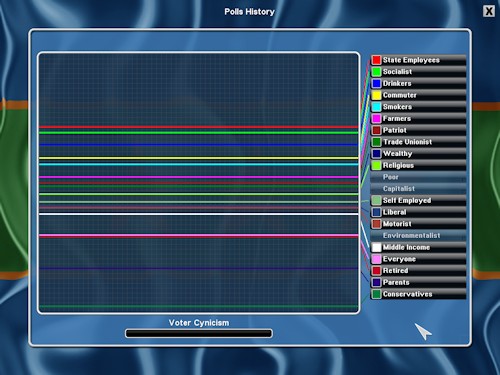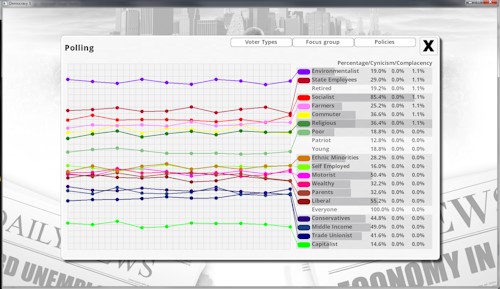Apart from the fact that it now has tabs for focus groups and policy popularity, I just think that the general color scheme and layout of the new polling screen (bottom) is miles better than the old one (top). Democracy 3 is the game I could always see in my head, I just couldn’t actually make it until now…

